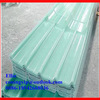Plastic Flashcards
Any of numerous synthetic or natural organic materials that are mostly thermoplastic or thermosetting polymers of high molecular weight and that can be molded, extruded, or drawn into objects, films, or filaments.
Plastic
A plastic capable of softening or fusing when heated without a change in any inherent properties, and of hardening again when cooled.
Thermoplastic
A chemical reaction in which the molecules of a monomer combine to form larger molecules that contain repeating strctural units of the original molecules.
Polymerization
A molecule of low molecular weight that can be chemically bound as a unit of a polymer.
Monomer

A compound of high molecular weight formed by polymerization and consisting essentially of repeating structural units.
Polymer

A polymer consisting of molecules that are large multiples of monomers.
High polymer

A compound of high molecular weight formed by polymerizing two or more different monomers together.
Copolymer

A method of shaping a plastic object by pouring the material into a mold and allowing it to harden without the use of pressure
Casting

A method of forming hollow ware by injecting air under pressure into a molten mass, as that of a thermoplastic or glass, and shaping the material within a mold.
Blow molding

A method of forming a thermoplastic, thermoset, metal or ceramic material by rendering it fluid in a heating chamber and then forcing it under high pressure into a closed mold.
Injection molding

A method of forming thermosetting plastic by cloasing a mold on it, forming the material by heat and pressure.
Compression molding

A method of forming thermosetting plastic by softening it in one chamber before it is forced into an adjacent mold where it is cured under heat and pressure.
Transfer molding
A method of shaping a thermoplastic sheet by heating and forcing it against the contours of a mold by heat and pressure.
Thermoforming
A method of thermoforming a plastic sheet by forcing it against the contours of a mold with compressed air.
Pressure Forming

A method of thermoforming a plastic sheet by evacuating the space between the sheet and the contours of a mold.
Vacuum forming

Any of numeros solid or semisolid organic substances prepared by polymerization and used with fillers, stabilizers and other components to form plastics.
Resin

A relatively inert substance added to modify the bulk, strength, heatresistance, electrical resistance, or working properties of a resin.
Filler

A substance added to prevent or retard the degradation of a plastic when exposed to ultraviolet radiation or other environmental conditions.
Stabilizer

Any of various substances added to a resin to increase its workability and flexibility.
Plasticizer

A substance that causes or accelerates a chemical reaction without itself undergoing a permanent change in composition.l
Catalyst

Any of a class of thermoplastic resins used for casting or molding plastic parts that are exceptionally transparent, tough, and resistant to weather and chemicals, or as the main ingredient in coatings, adhesives and caulking compounds.
Acrylic resins

Trademark for a brand of transparent acrylic resinl.
Lucite

Trademark for a brand of light, transparent, weather-resistant acrylic resin.
Plexiglas

A tough, transparent thermoplasti characterized by its high-impact strength and used for lightin fixtures, safety glazing, and hardware.
Polycarbonate


































